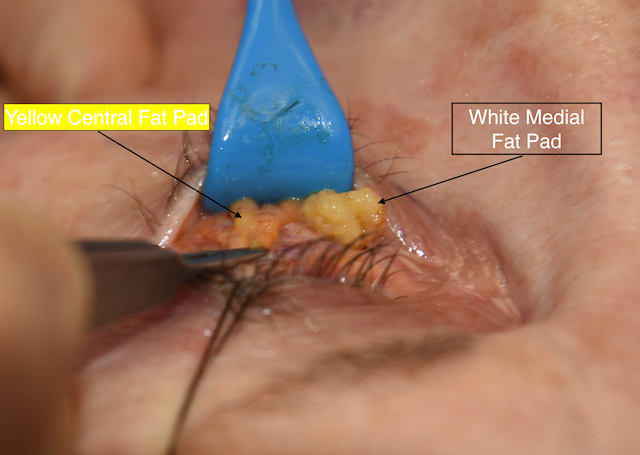The eyes are one of the first facial areas that are affected by aging. Excess skin, fullness from fat herniation and skin wrinkles are the typical manifestations of the periocular aging process. Because of the movement differences the upper and lower eyelids present somewhat different aging issues. The upper eyelid, because of its greater movement, develops more redundant skin. Conversely the lower eyelid, because of the presence of fat pads underneath the eyeball, develop herniation of the fat pads which appear as bags under the eyes.
Just as the aging process differs somewhat between the upper and lower eyelids, so does the surgical techniques to treat them. While fat can be removed from the upper eyelid, this is almost always associated with skin removal as well. Conversely fat removal from the lower eyelid can be done without skin removal. Younger patients without skin excess or older patients who have an increased risk of lower lid sag from a skin excision due to weaker lower lid support can benefit from isolated fat removal through a transconjunctival incisional approach.

It has long been speculated as to why there is a color difference in the suboculi fat pads. Differences in carotenoid content accounts for the visible color disparity with a 2 to 4X higher concentration of chromophore content with larger amounts of beta-carotene, lutein and retinol found in the yellow fat vs that of the whiter nasal fat. Why the central and lateral fat pad selectively absorb more carotenoids from the plasma than the nasal fat pad is not known.
Dr. Barry Eppley
Indianapolis, Indiana



